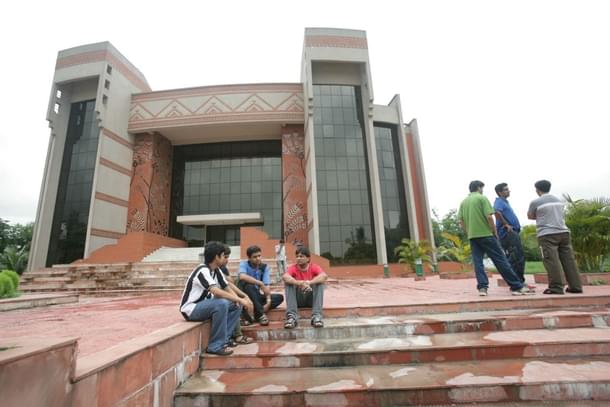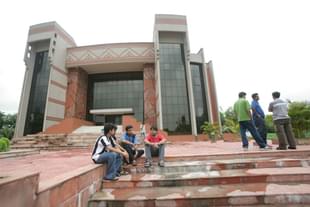Infrastructure
In These Times Do MBA Rankings Really Matter?
Swati Kamal
Feb 01, 2019, 12:05 PM | Updated 12:04 PM IST
Save & read from anywhere!
Bookmark stories for easy access on any device or the Swarajya app.


The Financial Times (FT) Global MBA Rankings 2019 that were out on 28 January placed four Indian B-schools in the top-50 management institutes across the world. It was Indian School of Business (ISB), IIM Ahmedabad, IIM Calcutta and IIM Bangalore, in that order, with ISB Hyderabad featuring in the top 25 B-schools.
At rank 24 in an international ranking, ISB is naturally the talk of the town in India. As are IIM-B and IIM-C for having improved their rankings. IIM-A, on the other hand, is in the news for having slipped from 39 to 47 within a year, and almost 20 ranks since 2017. This is also causing some intrigue.
What did it for ISB? Apparently, and as the dean of the institution pointed out, the most important factor was salary increase of the alumni. Of course, diversity in terms of women students and other factors also counted.
We tried to look into the making of the rankings — the methodology — and found that salaries are the most important weight in these rankings — 20 per cent weight each for a) average income three years after graduation, and b) salary increase compared to the pre-MBA salary.
The other important criteria that should have a place in an MBA aspirant’s listing are here in this ranking but with lower weights assigned to them. Like ‘value for money’, 'career progress’ and 'aims achieved’ are assigned weights of 3 per cent each. International faculty, students and board are 4 per cent each, and female faculty and students get 2 per cent each.
How Our Top Four Fared On Select Parameters
Indian B-schools command top-10 positions in five of the 10 categories. Especially commendable is the position of IIM-A and IIM-C at number two and three in general management and finance respectively. Possibly, it’s their slow and thorough management study that places the IIMs in these top slots.
Second, the other FT rankings that are released in September — viz the FT MIM rankings. It needs to be clarified that any of these rankings grade the programmes and not the B-school per se.
The current rankings rank the MBA programmes, which require prior work experience, and are often one-year courses variously known as PGPX, EPGP and so forth. The FT MIM rankings on the other hand, rank the 'masters in management’ programmes, requiring lower or no work experience. We figured there was considerable confusion, even among experts in education, human resources, IIM faculty regarding this.
The following is how the top institutes in India have fared in FT MIM rankings.
Again, the three IIMs feature in the top-25 schools out of 100, and have, in fact, improved their ranks over the past year. ISB does not have this programme and hence does not participate.
The difference in these rankings, apart from the duration of the course and the requirement of work experience, is also in the geographies: the FT MIM 2018 had programmes mostly from Europe, across 27 countries. FT Global MBA rankings had schools from 17 countries participate, but more than 50 per cent are US B-schools. FT, interestingly, happens to be a UK publication.
To Be Taken With Pinches Of Salt?
Without trying to take away from ISB’s rank-worthiness, one can still point out that salaries form the most important determinant of the global MBA rankings.
B-school alumni point out that in a self-reported survey, it is not difficult — nor uncommon — for alumni to fudge figures when reporting salaries, to push up their own school in the ranking.
From the methodology section, we also learn that alumni feedback forms the major chunk of the ranking, with 61 per cent weight. Says an expert in the field, “any disgruntled student whose career did not go as planned could easily bring down the ranking of any institute”.
Besides, only 20-per cent alumni need to respond in the survey for the particular school to be included in the rankings. There is thus, a greater chance of skewed results. Rankings could therefore, be taken with several pinches of salt.
Another reason to not jump to any conclusions on the merits of B-schools is that these surveys reflect partly, conditions three years ago, or over three years. Though it says 'Rankings 2019', the alumni are from the class of 2015. Given this, it is difficult to establish which is the better institute, currently.
Again, there are other MBA surveys. Like The Economist’s 2018 Survey had ranked IIM-A at 49; IIM-A was the only Indian school in the former’s list of top 100. Reportedly, The Economist has two rounds before a school is considered for ranking, and is a tough nut to crack. There is a QS Ranking that had IIM-A at position 48, IIM-B at 71, and ISB at 100.
How does one reconcile these? A little bit of inconsistency there, but then not that much after all, when you see that these big four of the Indian business schools arena do make it to most of the top-100 in most rankings. Yet, there is scope for improvement. Says a senior consultant at Deloitte, “the old schools have an entitlement attitude and a certain complacency. They must shed these and become competitive.”
What can be the possible course-corrections? Clearly, getting international faculty would enhance the value of the course, and where the IIMs are lagging considerably behind ISB.
Says Anurag Singal, CA, IIM-A PGPX Class of 2015, also a career mentor on YouTube: “ISB is ahead of IIMs when it comes to attracting international faculty. They benchmark their salaries at 60 per cent of the amount a professor earns in the US. I reckon that IIMs follow the Pay Commission prescribed structures for faculty. IIM-A has recently formulated faculty chairs with contribution from alums to reward its faculty members who engage in cutting-edge research.
“ISB, although it’s technically non-profit by structure, also has a large kitty – nearly 900 students paying 35 lakh per annum approximately for the one-year course, while IIM-A PGPX has nearly 135 students with an annual payout of around 30 lakh.”
For Whom The Rankings Matter
Who is impressed with the rankings — employers or prospective students? Says the HR DGM of a multinational based in Hyderabad, “In the Indian scene, not much. Companies hire from IIMs and ISB etc, because they need people to deliver; and you can’t find them all at one place”. He adds, “students would be happy to get into any of these — I don’t think they have any preferences during admission times regarding faculty, etc.”
The international relations officer of a new IIM goes a step further to say: “beyond a point, it doesn’t matter if you are IIM-A, B, C, or even Harvard, LBS, Insead!”
Meanwhile, at a Delhi undergraduate college, an economics (hons) student received an offer of Rs 38-lakh per annum package from a Singapore firm. And you thought you needed an MBA for immediate placements and high salaries?
Time for us to do a rethink on rankings and what they should reflect in this fast-moving world. Especially because, Isabel Berwick, FT’s new work and careers editor — and part of the team that put together the current rankings in question — is doing too!
Swati Kamal is a columnist for Swarajya.





